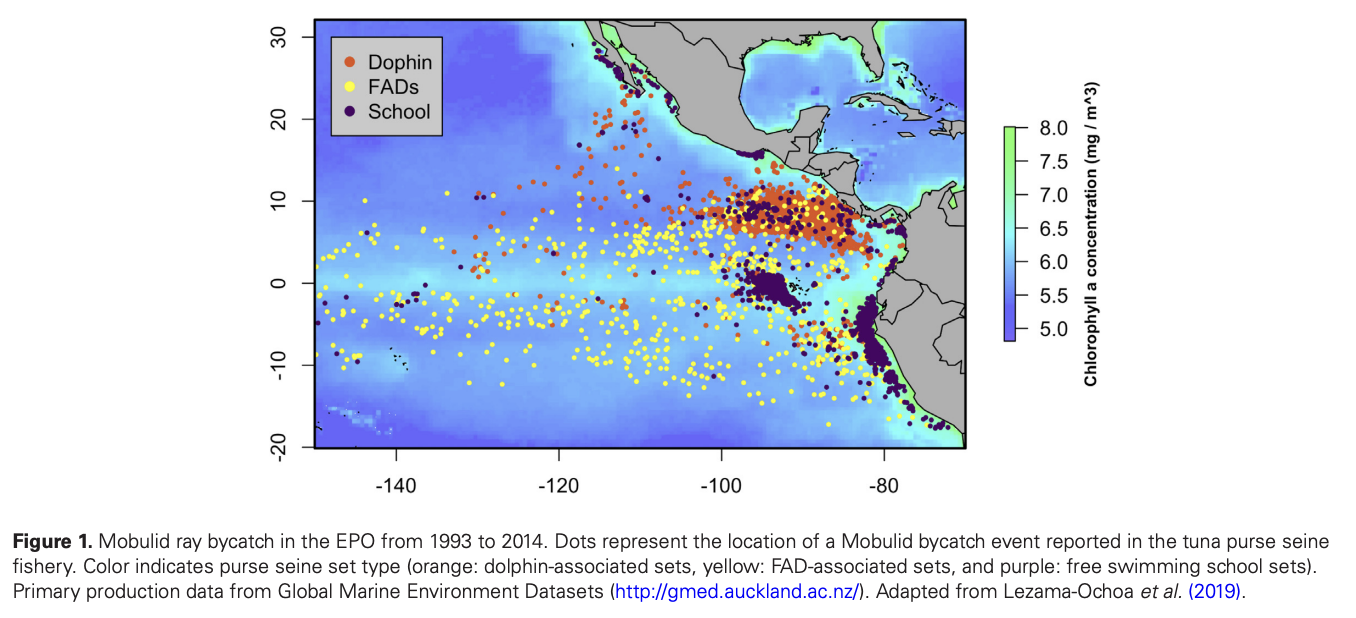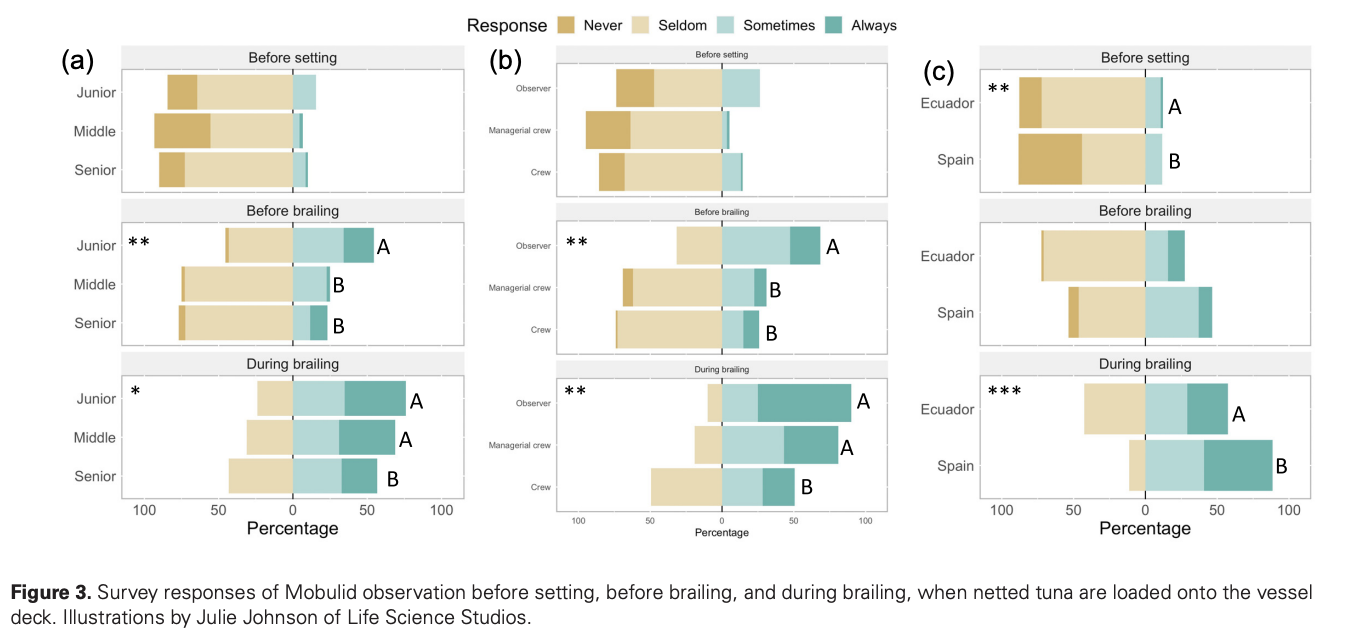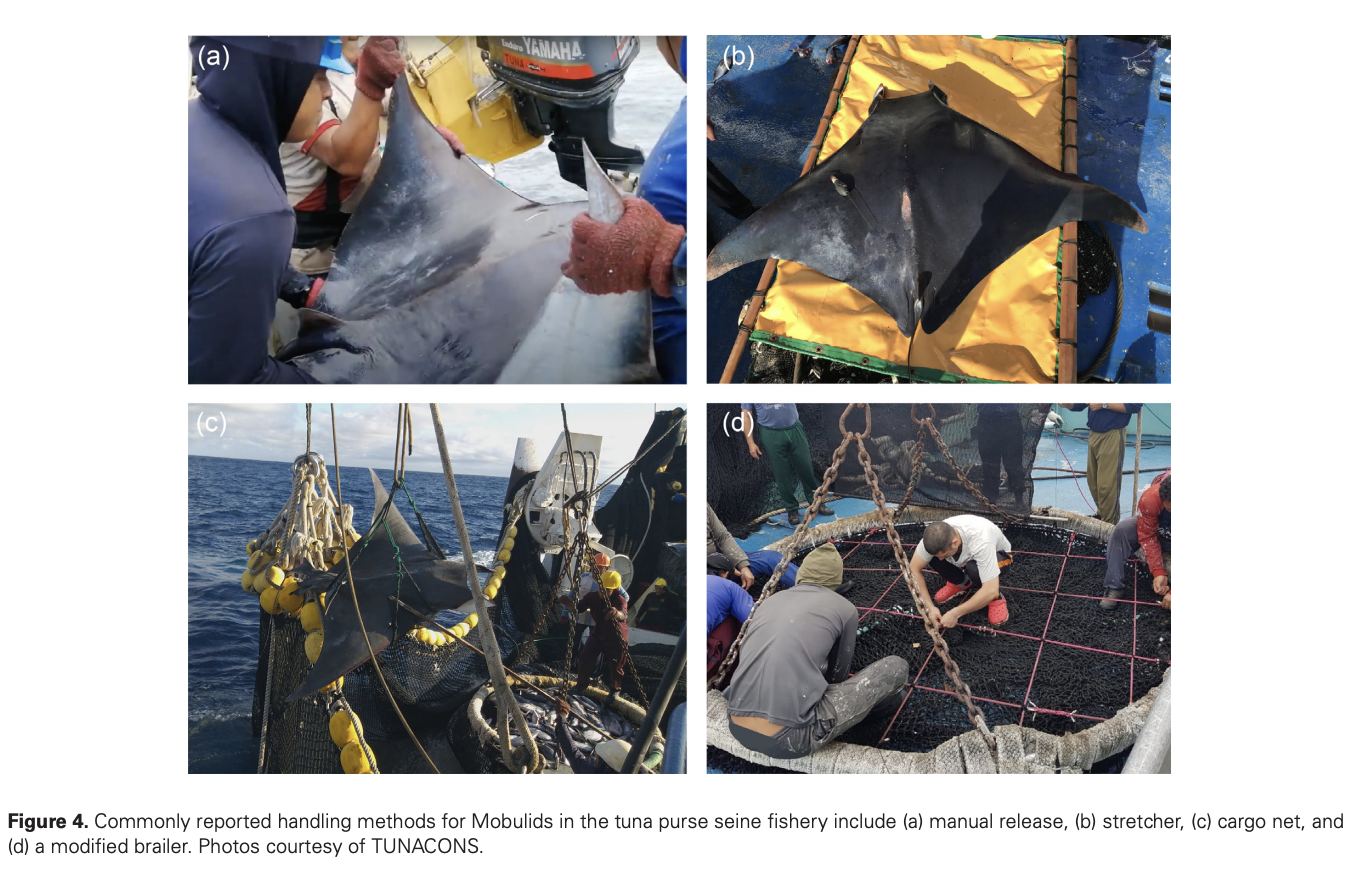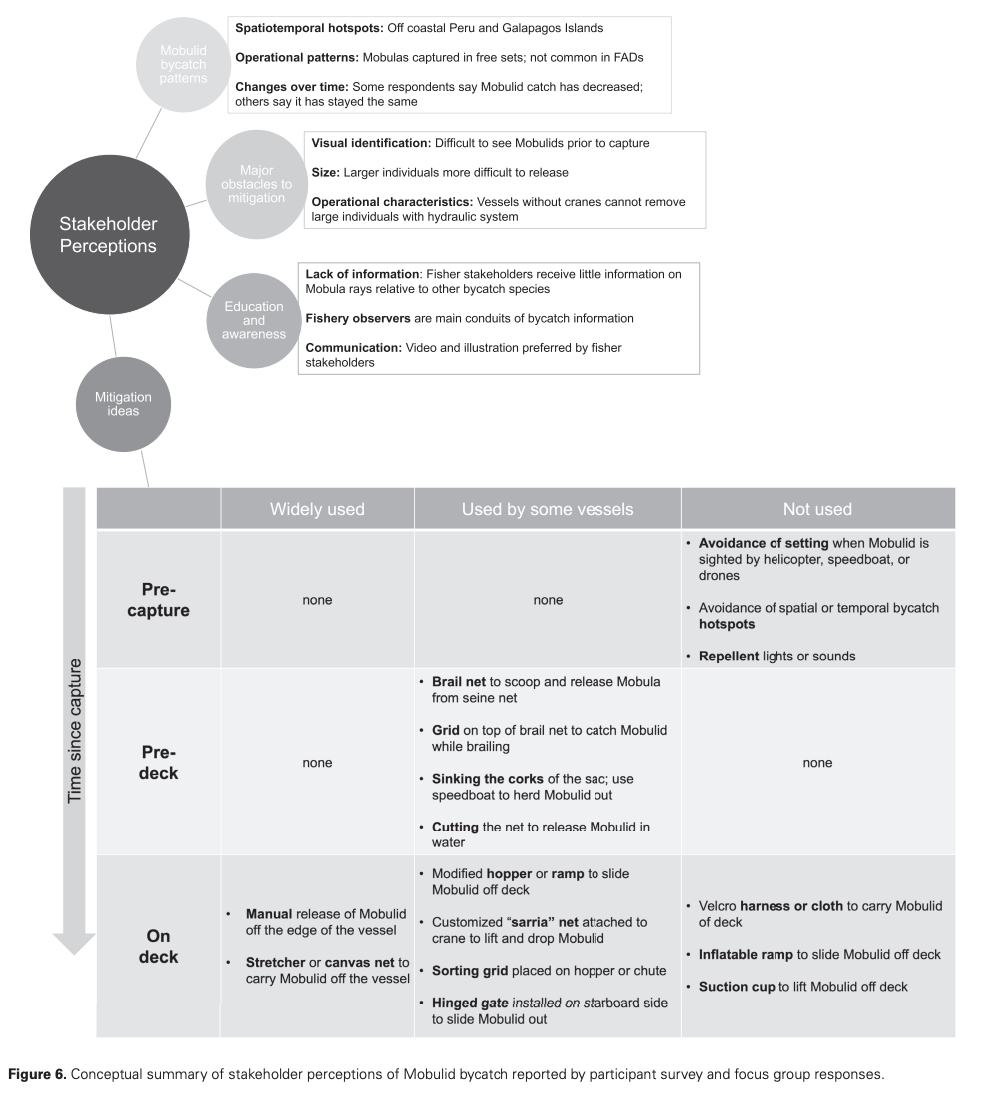Harnessing stakeholder knowledge for the collaborative development of Mobulid bycatch mitigation strategies in tuna fisheries
June 2022
Melissa R Cronin, Donald A Croll, Martin A Hall, Nerea Lezama-Ochoa, Jon Lopez, Hilario Murua, Jefferson Murua, Victor Restrepo, Stefany Rojas-Perea, Joshua D Stewart, Jennifer L Waldo & Gala Moreno
Keywords: Bycatch Mitigation • Collaboration • Elasmobranch • Mobulid Rays • Technology






Summary: Manta and devil rays (Mobulids) face threats from bycatch in tuna fisheries. Efforts to mitigate this issue often lack fisher expertise, hindering their effectiveness. A study focused on Eastern Pacific Ocean purse seine fisheries combined survey and focus group data to understand Mobulid bycatch and potential solutions. Challenges identified included difficulty in spotting Mobulids before capture and lack of appropriate equipment for release. Fishers suggested operational modifications and shared ideas for Mobulid avoidance. The study highlights the importance of incorporating stakeholder input in designing effective bycatch technology for large-scale fisheries worldwide.
Abstract
“Manta and devil rays (Mobulids) face several immediate threats, including incidental capture in industrial tropical tuna fisheries. As a result, efforts have emerged to avoid or mitigate Mobulid bycatch in these fisheries. However, many mitigation efforts fail to incorporate fisher expertise from the outset, potentially leading to interventions that are not viable. Here, we combine survey and focus group data to synthesize knowledge of Mobulid bycatch and mitigation ideas in Eastern Pacific Ocean purse seine fisheries. Primary obstacles for mitigating Mobulid bycatch, according to respondents, are: (1) an inability to sight Mobulids before capture, (2) the lack of specific equipment on board, and (3) the difficulty of releasing large individuals; we suggest that the latter two can be addressed by simple operational modifications. We also find that Mobulids are most likely to be sighted by fishers after capture, suggesting that this is an important time in the fishing operation for bycatch mitigation interventions that ensure Mobulids survive capture. To address this, we share creative ideas brought by fishers for avoidance of Mobulids. This study provides a model of how to incorporate stakeholder input in the design of bycatch technology in large-scale fisheries and could inform similar efforts around the world.”
Author Affiliations
University of California
Mobula Conservation
Inter-American Tropical Tuna Commission
International Seafood Sustainability Foundation
AZTI-Tecnalia/Herrera Kaia.
The Manta Trust
Funded by
National Science Foundation Graduate Research Fellowship
International Seafood Sustainability Foundation

